'We have to give ourselves grace': Buffalo still grieves two years after Tops shooting
Inside the Buffalo AKG Art Museum on the outskirts of downtown Buffalo sits a room tucked away from the rest.
Thick glass doors with thin white lettering outlining the exhibition's purpose keep the sound out. Low lighting and deep blue hued walls create a sense of safety inside.
Here, visitors can grieve, remember and learn.
Within the small square space on a Monday afternoon in May, a woman stops in front of a painting on the left side of the exhibition, reaches into a large black bag hanging from her shoulder and pulls out a small plastic pack of tissues, separating one from the bunch, and wipes her nose as emotions come to the surface.
A Buffalonian and docent at Burchfield Penney Art Center lets out a huge sigh as she takes in the piece, the forceful breath expelled with tinges of frustration, anger and sadness.
A group of high school-aged students from the southern part of Western New York gather in front of the same artwork. Clipboards and phones in hand, they look on as two teachers share their take on the piece's message.
What they're looking at isn't a Picasso, Monet or Van Gogh, but it captivates a crowd the same.
This is the work of Buffalo-based artist Julia Bottoms, whose brushstrokes depict a pile of salt granules spilling out of the metal spout of an upended, dark blue-labeled salt container. Behind the container is a graph illustrating the ebb and flow of attention to a tragedy; specifically, how it wanes in the year after, spikes on the one-year anniversary and plateaus immediately after.
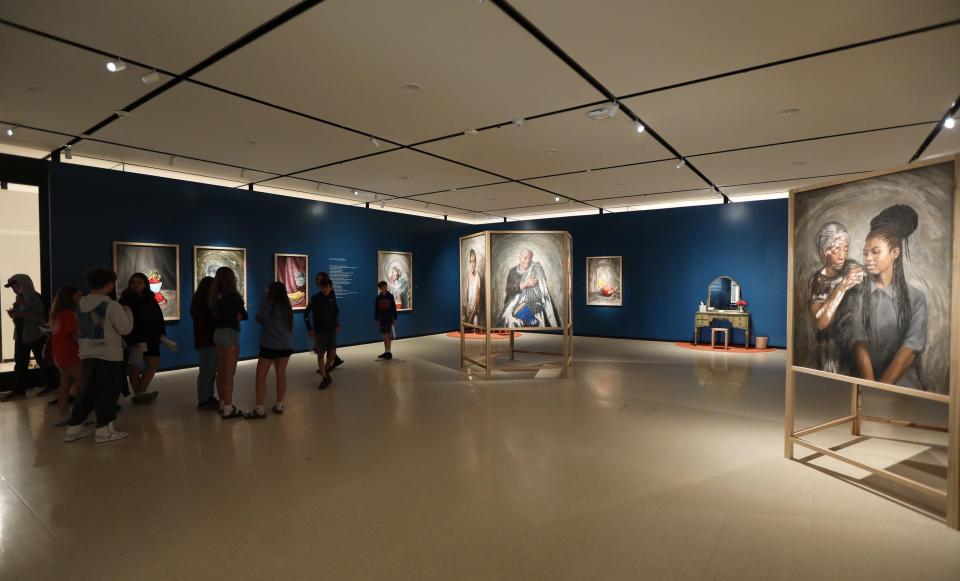
A blue notecard to the right of the painting reveals the title of the piece.
"Salt in the Wound."
It's one in a collection of paintings and poems responding to the May 14, 2022, racist mass shooting at a Tops Friendly Markets store located on the East Side of Buffalo, which took the lives of 10 Black victims.
What has happened in the last two years?
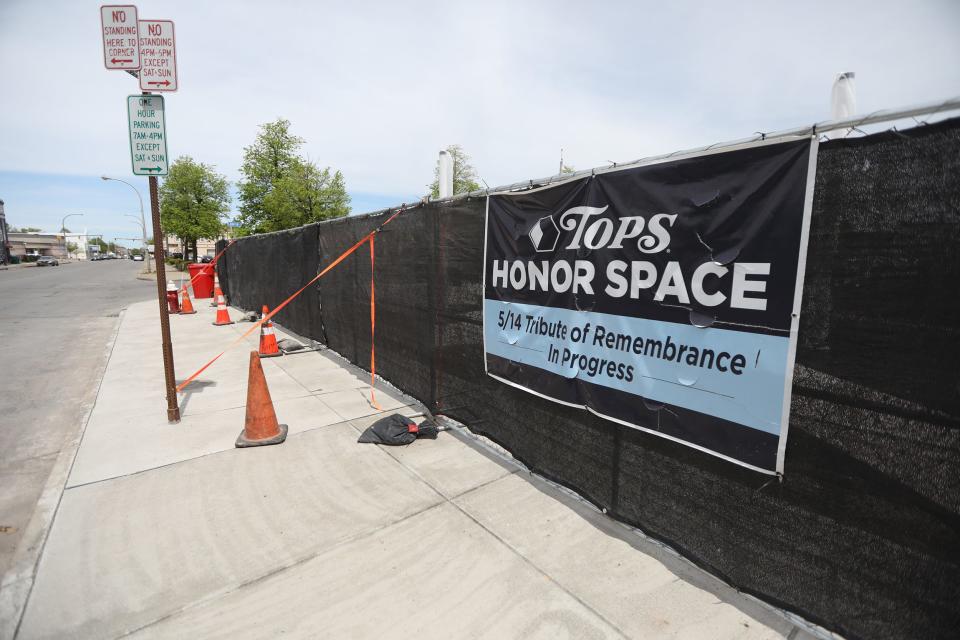
It's been two years since a gunman drove over 200 miles from his Southern Tier home for the murders, targeting the Jefferson Avenue location due to it being in a largely Black neighborhood in Buffalo.
Federal prosecutors are seeking the death penalty against now 20-year-old Payton Gendron, who is already serving a life sentence with no chance of parole after pleading guilty to state charges of murder and hate-motivated domestic terrorism.
And the victims' families have also filed lawsuits against social media companies such as Meta (Facebook), 4Chan, Reddit and YouTube, which they believe helped fuel the killer's racist hate.
Also in the time since, around $60 million has been poured into the East Side neighborhoods by New York state. With that has come the creation of a 5/14 Memorial Commission, a group of survivors, family members and local officials who are working with the community to create a memorial to honor the lives of the victims, which is in its final stages.
A permanent memorial will also be erected in the southwest corner of the Tops parking lot, due to be completed this spring.
And now the addition of this exhibition.
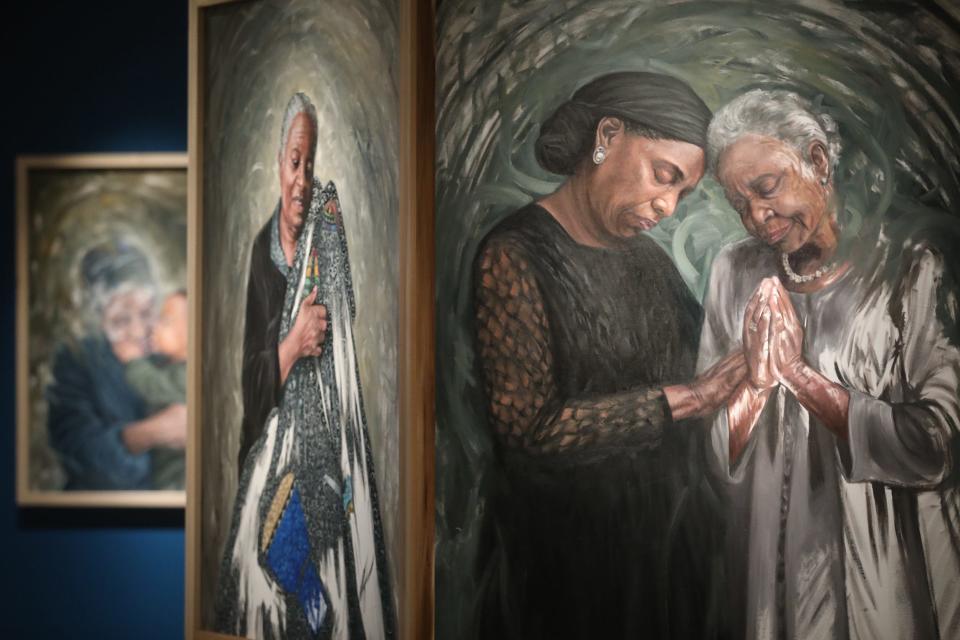
"Before and After Again" was created by Bottoms, Poet Laureate Emeritus of the City of Buffalo Jillian Hanesworth, curator, writer and photographer Tiffany Gaines and AKG's curator of public art Aaron Ott through a series of conversations with victims' family members and those in the East Side community.
The free-of-charge exhibition will be on display at the former Albright-Knox Art Gallery through Sept. 30 and will live on through a book of the same title.
A tale of two neighborhoods
"Before and After Again" is a conversation starter. It breaks down barriers. And it affirms Black people have a right to take up this space.
It's also miles away from the East Side neighborhood where the racist mass shooting took place.
Here, on Elmwood Avenue, smoothly paved streets are lined with blossoming trees and dotted with large ornate houses.
Restaurants and boutique shops can be found on every corner and an ample amount of grocery stores fill the west side of Main Street heading into the city.
But for those living to the east of Main Street, the city has written a very different story.
Expressways have been carved through Black neighborhoods, cutting off resources and leaving pothole-laden streets and dozens of empty lots with overgrown greenery in their wake.
At the center of it all stands the lone full-service grocery store — the Jefferson Avenue Tops — where 10 people were killed due to the color of their skin.
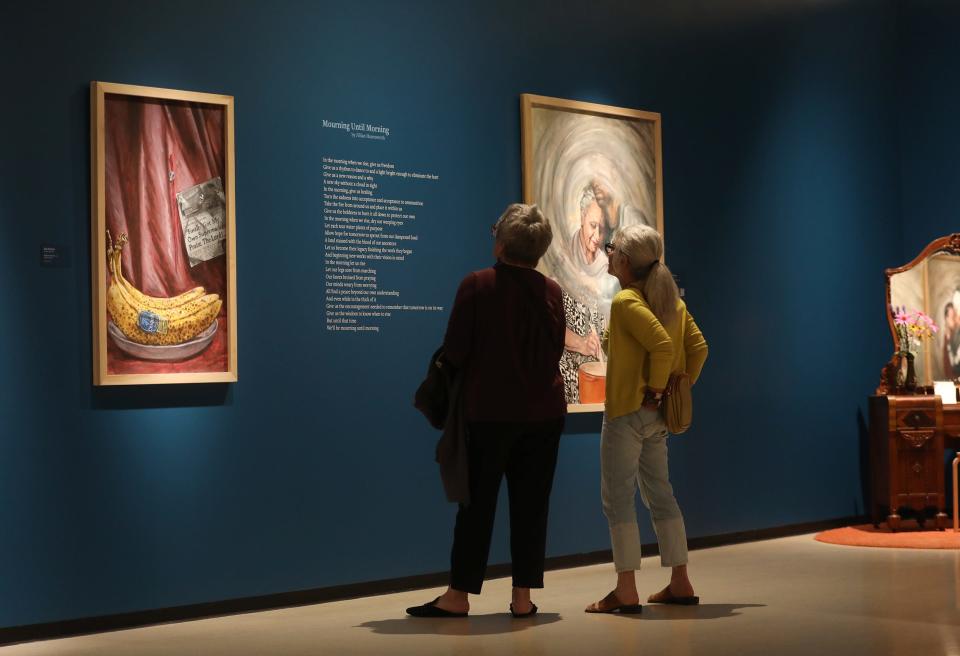
In "Before and After Again," housed in a neighborhood that heavily benefited from the systems continuing to deprive the East Side, red ribbons, newspaper clippings and early 1900s maps depicted on canvas illustrate that redlining.
These pieces spark difficult conversations, forcing the viewer to confront a harsh reality.
"One benefit of taking this information in this story to an audience that has the privilege to turn away from it is that now they have to talk about it," Hanesworth said.
"It's really important that we make sure that we are not confining these conversations around grief and oppression and racism just to the Black people in the communities that are also trying to survive it and navigate it."
Where do we go from here?
Now, two years later, the eyes of the world briefly turn back to the City of Good Neighbors. Like the painted graph in Bottoms' piece, attention spikes once again.
It's not as high as the days after the shooting, not even as high as it was a year ago.
Media outlets from all over the country are no longer camped out across the street from the Jefferson Avenue Tops. Bouquets of flowers, candles and crosses have long been removed from the corner of its parking lot.
But there are moments of silence, tributes on social media and a new public memorial design.
Too soon, eyes and ears will again turn away, leaving problems unsolved as attention once again plateaus.
It took time for those problems to arise. It will also take time to solve them.
The work begins in the plateau.
“We have to give ourselves grace,” said Masten District Councilwoman Zeneta Everhart, who is the mother of May 14 survivor Zaire Goodman. “We’re going to get to where we’re trying to go. But it’s gonna take some time.”
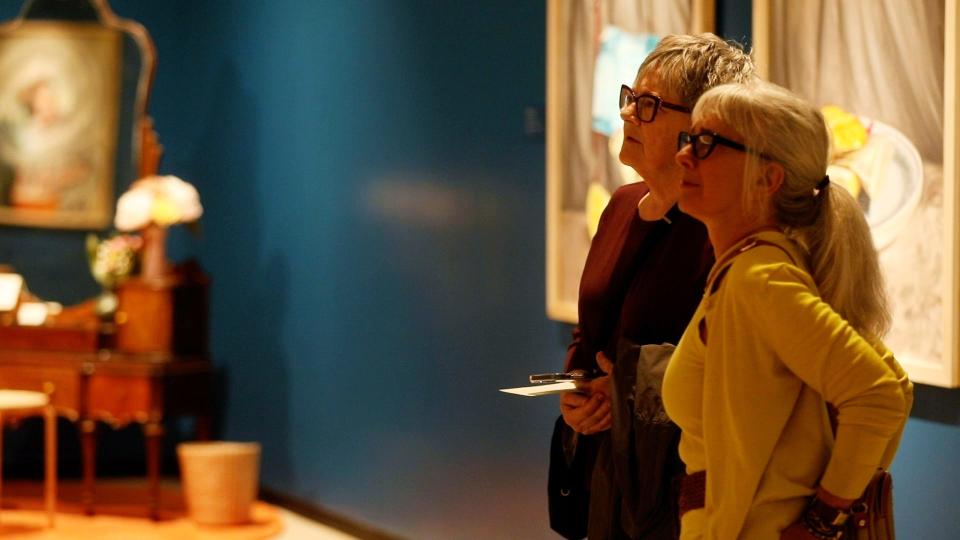
In the meantime, there is "Before and After Again," here for the next four months. There are the students and teachers from a few hours' drive away, learning from the artwork about redlining for the first time. There is the woman who lives and works nearby, determined to confront her city's history of discrimination. There are the faces in the portraits, and the thousands more they represent.
And there are the names this city has vowed never to forget:
Aaron Salter Jr.
Ruth Whitfield
Pearl Young
Katherine "Kat" Massey
Roberta A. Drury
Heyward Patterson
Celestine Chaney
Andre Mackniel
Geraldine Talley
Margus D. Morrison
Emily Barnes is the New York State Team consumer advocate reporter for the USA TODAY Network. Contact Barnes at ebarnes@gannett.com or on Twitter @byemilybarnes.
This article originally appeared on Rochester Democrat and Chronicle: Buffalo Tops mass shooting: Grief and memoires two years later
